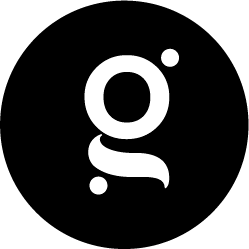3 Simple Strategies To Build Steady Income As A Freelancer
There is only one thing I miss from my old corporate job: my monthly paycheck. I miss those days when I used to know exactly how much I was going to get paid every month and when. Now, that monthly income is always a big question mark.
The first challenge any freelancer has to face is getting enough clients to make a living. But, even when I managed to have regular clients and projects, I still never knew when the money would finally hit my bank account.
This situation drove me crazy for months. I used to have 2 or 3 big projects being paid in the same month and then 2 or 3 months with no more payments. The issue ended up causing a lot of stress and constant concerns about my business profitability.
After analysing the problem with my finance expert husband, we developed three simple strategies that totally changed my business, bringing a more consistent income to my bank account on a monthly basis.
Grafika Studio monthly income comparison: 2014 vs 2015 income. Just three simple strategies allowed my business to make a lot more income and in a more steady way.
Although there is not such a thing as steady income when you are a freelancer, here are three ways to ensure money comes to your bank account regularly:
1. Milestone payment schedules
Getting paid for a design project should be an easy task: the client hires you, pays the deposit invoice and a few weeks later you deliver the project and send the final invoice. What could possibly go wrong in this simple process?
Client’s revisions, holiday periods, indecisions, changes, technical issues, more changes… anything can delay the project completion.
Design projects often take a long time to complete, even the small ones. Many things can put your project on hold for weeks, which means you won't get paid at all, even though you have already done most of the work and the project is almost finished.
For this reason, I saw the need of changing my payment structure from two simple payments (deposit and final invoice) to the following:
- Projects on an hourly rate (usually under $1,000) – total hours are billed at the end of each month, even though the project has not been finalised yet.
- Projects on a fixed price (usually over $1,000) – a percentage is billed at the end of each phase (design, development, launch, etc) The larger the project is the more phases it will have.
It takes me an extra hour every month to track all my billable hours through my activity book and invoice everyone, but this way I ensure I get paid for the time I worked along the month more consistently.
From a client perspective, they usually prefer to get smaller bills every month as their projects develop, rather than a bigger final bill at the end of the project, so everyone wins.
Also read this other post to find out more about how I price design services.
2. Project Size Mix
You’ve probably heard before that it’s better to make $10,000 from just one client– or a project - than from 10, which means you should always target big clients or projects. In my opinion, this is not always true.
From a client management point of view it’s easier to manage only one big account than 10 small accounts, but from a business strategy point of view, this is a risky tactic, as your business depends on one client only.
If your project gets delayed, postponed, or you just simply lose your client, you lose 100% of your sources of revenue. But, if you have 10 small clients and lose one, you only lose the 10% of your business revenue.
Solution: work on a combination of big and small projects at a time. Big projects take longer to complete but generate bigger revenue. However, if a big project payment fails at the end of the month, you can still have smaller projects to bring quick cash flow.
At the beginning of each month, I set my priority projects and plan my work around them. I put in my pipeline a combination of 1 or 2 big projects and 4 or 5 small projects. This way I don’t take the risk of working just on one big project that could be potentially delayed, put on hold or even cancelled, and I don’t multitask working on too many small projects that will only generate a small revenue at the end of the month.
To manage multiple projects, track time and invoice clients you can use:
3. Diversify your income stream
I said it before and I’ll say it again: passive income saved my business in my first year as a freelance designer.
Building a portfolio of clients who request design jobs on a regular basis and refer you to others takes time. Until you get to that point, there are other things that you can sell online:
- Your services (what you are already selling to your clients)
- Your products (digital or physical)
- Your knowledge (i.e. e-book, e-course, webinars, etc)
- Your audience (i.e. advertising)
Many designers only focus on selling customised services to their clients. But you can also develop your own designs and sell them online. In my first year in business, I created a shop in Etsy to sell digital planners which last year generated over 18% of my total revenue. In my second year, I opened another shop in Society6 to sell artwork.
Selling knowledge is also another great source of passive income. Your knowledge can be sold in many different formats: ebooks, e-courses, business coaching, etc. Since I started my business paid guest posts and media contributions have generated around an 19% of my monthly revenue. This year I’ve added the e-courses for creative entrepreneurs.
If you have a blog you can also sell advertising or sponsored posts, by allowing others to place links and other information on your website. I don’t allow advertising or paid content in this blog, but my other lifestyle blog, www.chic-deco.com, generates around 11% of my monthly income in advertising.
Generally speaking, I wouldn’t be able to make enough through my passive income by itself but this source of revenue brings around a 48% of effortless and consistent monthly income.
Grafika Studio income streams in 2015. The addition of the shop, a regular collaboration with an industry magazine and advertising from my second blog ChicDeco achieve a more steady income
Take away
Freelancing brings exciting opportunities to double or triple your income in a short period of time. But at the same time, you need to keep an eye on your finances and ensure you bring money into your bank account on a regular basis.














